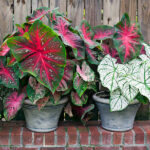Today, we’re going to delve into a topic that’s familiar to many hydrangea enthusiasts. Hydrangeas, with their large, lush flower heads, are a favorite in many gardens. But have you ever seen your lovely hydrangeas gradually turn green and wondered why? Well, we’re here to quench your curiosity and explore this common hydrangea phenomenon.
- 7-3-3 Analysis – Great for promoting lush leaves and enhance and maintain blue color in many pink and blue varieties of hydrangeas.
- Many Ways to Feed – Hydrangea Blue can be used as a foliar or root feeding product. Great for spraying directly onto leaves, roots, or when used in a continuous feed system.
- Water-Soluble Powder – Powdered concentrates go further than liquid fertilizers. Simply mix your measured powder with water and you are ready to feed with multiple gallons of liquid fertilizer!
- Included Measuring Spoon – All Jack’s Classic fertilizers come with a convenient spoon to create the right amount of liquid fertilizer for your plants.
- Micronutrients – Added micronutrients supply your plant with the nutrition it needs for optimal growth and health. Unlike other fertilizers, additional feeding is not required.
The Natural Life Cycle of Hydrangeas
Did you know that a hydrangea’s color change is often just a part of its natural life cycle? It’s like the plant’s version of changing clothes with the seasons!
- From Bloom to Green: When hydrangeas bloom, they usually show their traditional vibrant colors—blue, pink, purple, or white. As the flowers age, they often take on a green hue. It’s their way of saying they’ve moved past their prime bloom time, and are slowly transitioning towards the end of their life cycle.
- A Natural Process: This green phase is a natural part of a hydrangea’s journey. It doesn’t mean your plant is sick or unhealthy. In fact, some gardeners appreciate the muted, elegant beauty of these green hydrangea flowers.
So, if your hydrangeas are turning green, don’t panic! It’s usually just nature taking its course. But, are there other reasons why your hydrangeas might be turning green? Let’s find out in the next section.
- Hardiness zone 4-9
- Sun to partial shade
- Mature size Height 3-4′ Width 4-5′
- 1 gallon
Other Causes of Green Hydrangeas
While the natural life cycle is often the culprit behind your hydrangeas’ green shades, there are other factors to consider too.
- Type of Hydrangea: Some varieties of hydrangeas are naturally green or change to green much sooner than others. For instance, the Limelight hydrangea has a greenish hue throughout its life cycle.
- Light Exposure: Too much intense sunlight can cause hydrangea blooms to fade and turn green. On the other hand, if your hydrangeas are in deep shade, they might not develop their rich colors and could appear more green.
- Soil Health: A less common reason for green hydrangeas is poor soil health. A lack of specific nutrients can affect the color intensity of your blooms.
- FOR USE ON: For all Acid-loving plants; Use Espoma Organic Soil Acidifier for azaleas, hydrangeas, rhododendrons, blueberries, evergreens, strawberries, camellias, and all plants that thrive in acidic soils
- TURNS HYDRANGEAS BLUE: Turn Mophead & Lacecap hydrangeas blooms to an electric blue by adding Soil Acidifier and lowering soil pH
- CONTAINS: Soil Acidifier contains elemental sulfur and gypsum
- FOR ORGANIC GARDENING: Soil Acidifier is approved for organic gardening; It is a registered Organic Input Material meaning it meets all requirements for organic production
- MADE IN THE USA: Product of the Espoma Company. The leader in natural organics since 1929
Preventing and Reversing Greening
So, can you prevent your hydrangeas from turning green? While you can’t stop the natural aging process of the flowers, you can ensure optimal conditions for vibrant blooms.
- Choose the Right Spot: Make sure your hydrangeas get morning sun and afternoon shade. This balance helps the flowers develop rich colors without fading.
- Monitor Soil Health: Regularly testing your soil can ensure it’s providing all the necessary nutrients for your hydrangeas. Adding compost or a slow-release fertilizer can also help keep your soil rich and healthy.
Conclusion
And there you have it! Your hydrangeas turning green is usually a natural part of their life cycle, but factors like the type of hydrangea, light exposure, and soil health can play a role. By understanding these factors, you can ensure that your hydrangeas are as vibrant as possible. Just remember, even when they’re green, hydrangeas are still one of the garden’s most beautiful stars. So, let’s appreciate their changing colors as part of the wonderful, ever-changing canvas that is nature.







